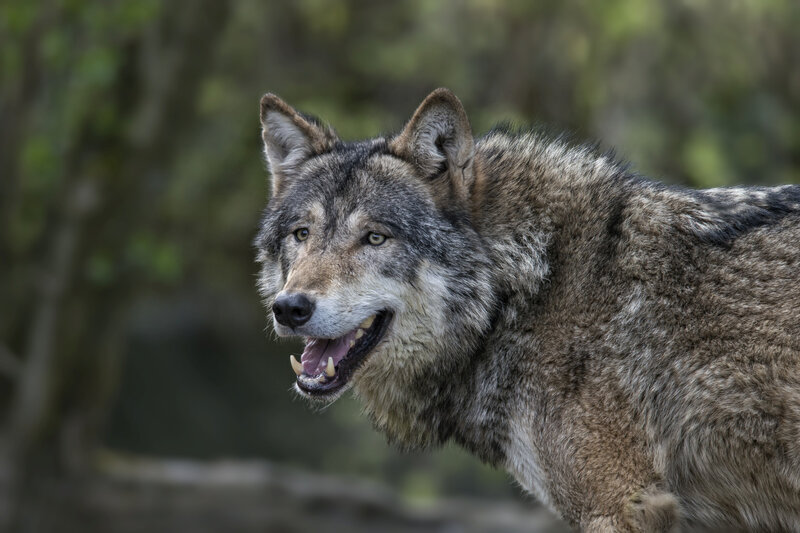 |
| A Eurasian wolf in Sweden's Jamtland County |
In 1995, wolves were reintroduced in Yellowstone National Park where they had a powerful impact on the northwestern parts of the U.S. Now, a wealthy landowner named Paul Lister wants to try a limited version of that project in the Scottish Highlands. A native of England, Mr. Lister is longing for the regeneration of Scots pine, mountain ash and alder, and return of wildlife to the highlands. When he purchased a 23,000-acre estate northwest of the city of Inverness fifteen years ago, Mr. Lister named the place Alladale Wilderness Reserve and started restoring the environment by replanting hundreds of thousands of trees in some areas and reviving dried out peat bogs in others. However, the reserve also happens to have a thriving red deer population which is hindering the replanting efforts with the animals eating young tree shoots. In addition to roughly 750 deer, Alladale is also home to a small herd of Highland cattle, foxes, and eagles. According to reserve manager Innes MacNeill, the reserve's ecosystem is unbalanced at the moment and stated that it is not the deer that are responsible for habitat degradation but people for having killed off wolves centuries ago and allowing deer to flourish without the fear of predation. He further added that bringing wolves back to Scotland would keep the deer population in check and allow young tree shoots to survive and thus continue regenerating.
 |
| Red deer herd in Scotland |
However, as with the reintroduction of wolves in Yellowstone, this project has faced serious opposition. The main opponents against One group called Ramblers Scotland, a charity which advocates the "right to roam" for hikers, opposed the wolves' return to Scotland, particularly in a closed-off area that people would have to pay to visit. Fergus Ewing, a lawmaker representing farmers' interests, asserted that bringing wolves back would spell disaster for farmers and their livestock. In response to his opponents, Mr. Lister stated that he intends to charge visitors to see the reserve, and the increased number of visitors would provide a significant boost to local village economies. He assured the farmers that all wolves would be radio-collared and tracked with satellites, so that if one escapes it would be quickly captured and returned to the reserve. He further added that this not a reintroduction of wolves to the wild, but a limited project in "rewilding" a 50,000-acre piece of the Scottish Highlands surrounded by an electric fence.
 |
| Manager Innes MacNeill in Alladale Wilderness Reserve |
I greatly applaud Mr. Lister's efforts of reviving Alladale Wilderness Reserve's flora and fauna, especially when it comes to reintroducing wolves in order to keep the red deer population under control. I'm confident that if wolves in Yellowstone were able to dramatically change the national park's ecosystem by keeping the elk numbers in check and allowing the local flora to flourish, then it can work for Alladale. Although I'm aware that this project is not intended to reintroduce wolves to the wilds of Scotland in general, I do believe that it will serve as a model in bringing wolves back in other protected areas of Scotland. This would help reshape the ecosystems of those protected areas where there are growing populations of red deer. I believe that when it comes to bringing wolves back to Alladale, it is important to charge visitors to see the reserve because otherwise the number of visitors coming to see the wildlife would increase dramatically and that would greatly disturb the wolves, their prey, and other wildlife. In addition, Scotland's farmers should be provided with livestock guardian dogs to minimize the risk of potential livestock predation by wolves. These animals had disappeared from Scotland since the 1700s and it is crucial to bring them back in order to reshape Scotland's natural ecosystems.
View article here
No comments:
Post a Comment